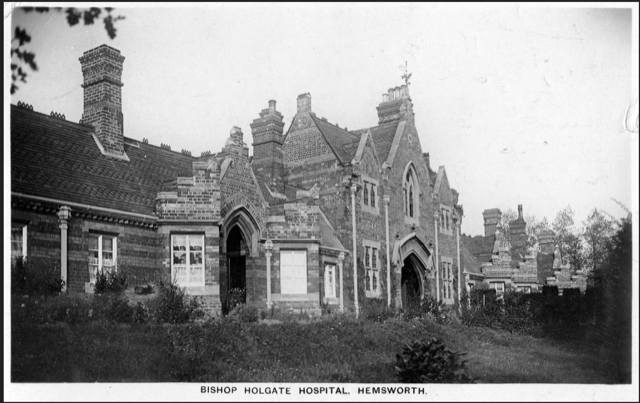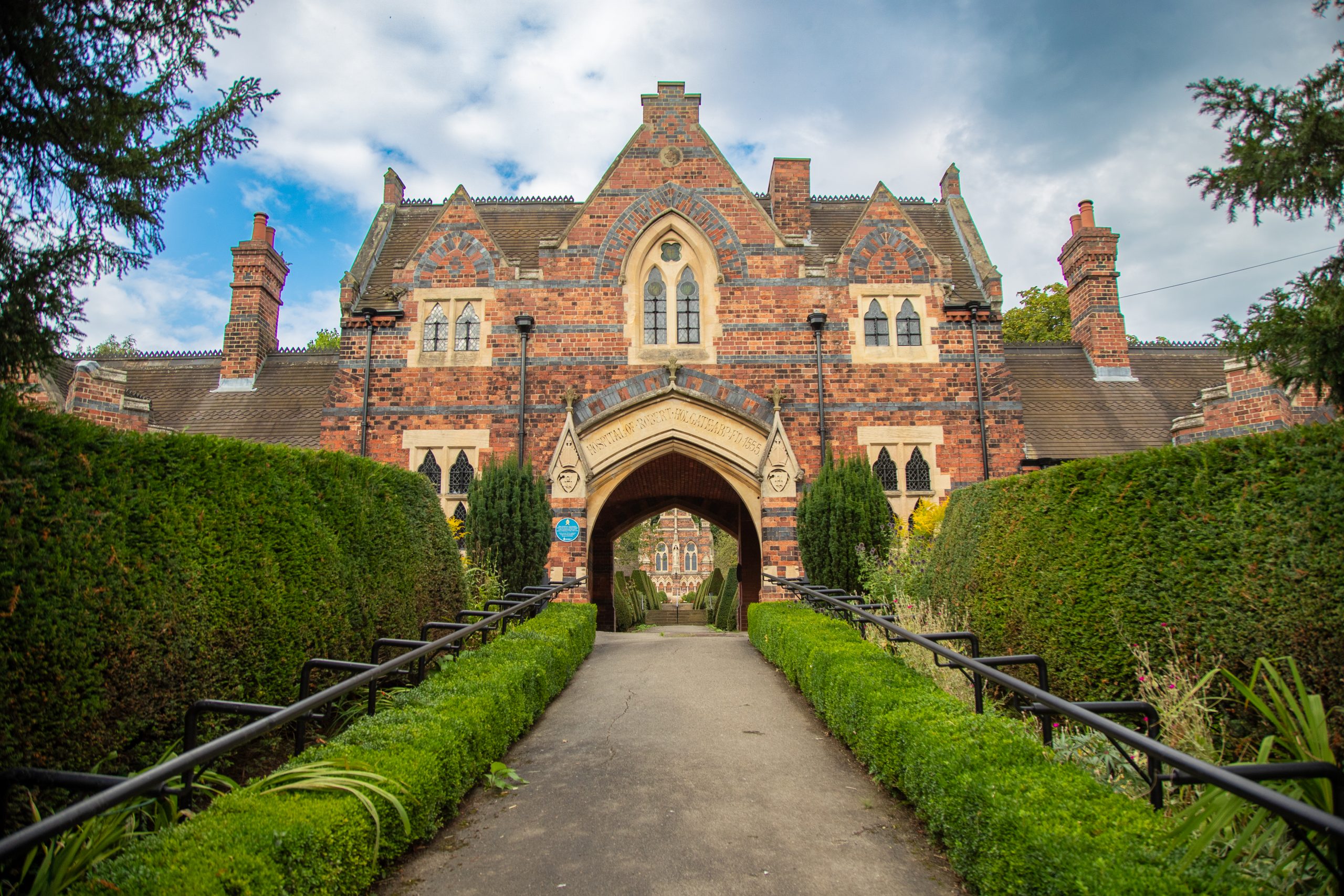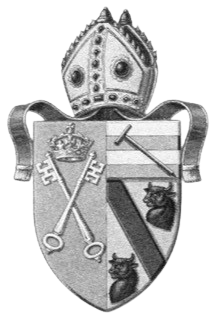Our History
The history of the hospital spans from the instruction in the will of Archbishop Robert Holgate in 1555 to the present day. A grammar school and a hospital, or almshouses, was founded in the mid-sixteenth century.
Born in 1481, very little is known about Robert Holgate’s early life except that he was born at Vissett Farm very near the present hospital.
Following a long and distinguished career at Cambridge University, Robert Holgate became a monk in the Order founded by Gilbert of Sempringham in Lincolnshire. The Gilbertines are the only purely English religious foundation prior to the Reformation.
In 1534 he became Master of the Gilbertine Order and Prior of Watton in East Yorkshire in 1536. He went onto be Prior of St. Catherine’s without Lincoln and also Vicar of Cadney near Brigg in North Lincolnshire.
In 1537, on Lady Day (March 25th) Robert Holgate was consecrated Bishop of Llandaff in Wales and in the same year he was appointed a member of the King’s Council becoming Lord President of the Council in the North, which had been set up by Henry VII. The Council was a means of subduing and controlling rebellious Northerners, as well as keeping the Scots at bay and dispensing impartial justice.

Bishop Holgate’s service did not go unrewarded for in 1545 he was appointed Archbishop of York. In this role Robert Holgate had supreme power from the River Trent to the River Tweed and from the East to the West coasts. He was in effect Viceroy of the North.
On becoming Archbishop of York, he surrendered to the King 67 manors belonging to the See (Bishopric) of York together with a substantial amount of property belonging to the dissolved monasteries. The King needed money for his wars and his conscience was not troubled as to how he came by it. In return, Holgate was allowed to retain lands and property he had confiscated from those who refused to acknowledge Henry VIII as Head of the Church in England and by this means Robert Holgate became the wealthiest prelate in England.
The Dissolution of the Monasteries, following the break of the Church in England with the Church of Rome, saw many magnificent abbeys and priories, such as Fountains, Rievaulx and St. Mary’s Abbey in York dissolved and all wealth and lands confiscated by the crown. Nearly 2000 religious houses throughout England were dissolved. Many were hospitals endowed with estates given by powerful benefactors.
The impact on the local communities and the poor was immense. The poor relied on the monasteries for daily doles of food, education and medical aid.
Robert Holgate recognised the need for schools and care for the poor and the needy. On the accession of Queen Mary and the return to allegiance to Rome, Robert Holgate was deprived of his See of York and was imprisoned in the Tower of London. He skilfully apologised to the Queen – not least for having married. He promised to obey the Queen’s laws, to act according to his vocation and to make amends for his offence.

The establishment of a school in October 1546 by letters patent granted by Henry VIII, is a result of the void created with the dissolution of the monasteries. Though it was not a great success. There were complaints, at times, about the masters failing in their duties and periods in the eighteenth century when there were no pupils. A revival was attempted, and a new school built and opened in January 1868. The school finally closed as part of the reorganisation of the school system.
The endowment, based on revenue from lands which Archbishop Holgate held, appeared in Holgate’s will date April 1555 and was carried into effect a year after he died in 1556.
The hospital founded in line with Robert Holgate’s wishes was believed to have been established in the vicinity of the Market place in Hemsworth with 18 cottages for the poor established on a site at Common End.
Originally the endowment was for a master and ten poor men and ten poor women from the locality. The brothers and sisters wore gowns, were not permitted to frequent the ale-house, nor allowed out without permission later than half past nine in the summer or half past seven in the winter. A fine of twopence was levied for breaches. Being a common swearer, drunkard or brawler could lead to removal.
In 1777 records reveal that a Hospital was built on the land to the rear of St. Helen’s Church in Hemsworth during the time Richard Stringer was Master. This building was not demolished until 1960. The original plan was for the building to levelled when the hospital moved to its current location in 1860. The Archbishop Holgate Almshouses, offered housing accommodation in a complex of 24 cottages for selected elderly people.
For further information The National Archives have a list of documents and their locations within the
- Barnsley Archive and Local Studies
- York Minster Archives
- West Yorkshire Archive Service, Wakefield
- Wakefield Libraries and Information Services, Local Studies on the school and the Holgate foundation from 1786-1980
‘
List of Masters
of
Archbishop Holgate Hospital
in Hemsworth
‘And that the Master thereof shall be a Clerk and within the holy order of priesthood at such time as he shall be thereto nominated or appointed & shall be nominated & made perfect Master of the said Hospital by the gift and grant of mine Executors’
Extract from the Last Will and Testament of Archbishop Robert Holgate
1637 Thomas Harrison
1663 – 1664 James Wood
1684 William Wood
(Dates unknown) – Moor
(Dates unknown) – Farrar
1749 – 1786 Richard Stringer
1786 The Reverend John C. Simpson
1857 – 1872 The Reverend Charles Edward Armstrong
1872 – 1878 The Reverend Sir Thomas Eardley Wilmott Bloomfield (Bart)
1879 – 1895 The Reverend William Knight
1895 – 1906 The Reverend George Sissons Filliter B.A.
1906 – 1923 The Reverend Henry Howlett M.A.
1924 – 1937 The Reverend G.E. Baddely
1938 – 1956 Canon Edward Barrington Carlton
1956 – 1963 The Reverend Thomas Horatio Whitehouse
1963 – 1965 The Reverend Wilcox
1965 – 1966 Canon Walter Musgrave
1966 – 1977 The Right Reverend Kenneth Graham Bevan
1977 – 1982 Canon Edward Lincoln Facey
1982 – 1988 The Reverend C. R. Ollier
1988 – 1998 Canon John Richard Morris
1998 – 2009 The Reverend S. K. L. I. Vick SSC
2009 – 2021 The Reverend David Wheatley SSC
2022 – Canon Andrew George Sage B.A. SSC
